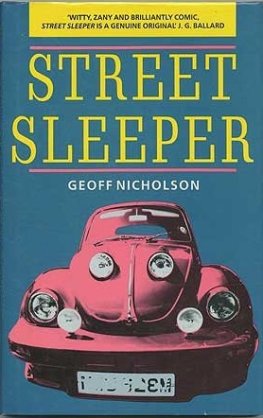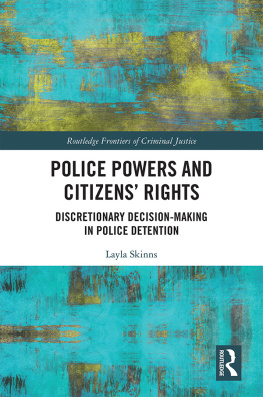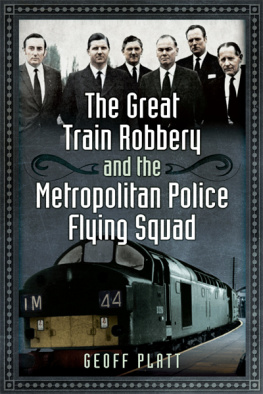Geoff Pearson - Police Street Powers and Criminal Justice
Here you can read online Geoff Pearson - Police Street Powers and Criminal Justice full text of the book (entire story) in english for free. Download pdf and epub, get meaning, cover and reviews about this ebook. year: 2020, publisher: Bloomsbury Academic, genre: Home and family. Description of the work, (preface) as well as reviews are available. Best literature library LitArk.com created for fans of good reading and offers a wide selection of genres:
Romance novel
Science fiction
Adventure
Detective
Science
History
Home and family
Prose
Art
Politics
Computer
Non-fiction
Religion
Business
Children
Humor
Choose a favorite category and find really read worthwhile books. Enjoy immersion in the world of imagination, feel the emotions of the characters or learn something new for yourself, make an fascinating discovery.

- Book:Police Street Powers and Criminal Justice
- Author:
- Publisher:Bloomsbury Academic
- Genre:
- Year:2020
- Rating:3 / 5
- Favourites:Add to favourites
- Your mark:
- 60
- 1
- 2
- 3
- 4
- 5
Police Street Powers and Criminal Justice: summary, description and annotation
We offer to read an annotation, description, summary or preface (depends on what the author of the book "Police Street Powers and Criminal Justice" wrote himself). If you haven't found the necessary information about the book — write in the comments, we will try to find it.
Police Street Powers and Criminal Justice — read online for free the complete book (whole text) full work
Below is the text of the book, divided by pages. System saving the place of the last page read, allows you to conveniently read the book "Police Street Powers and Criminal Justice" online for free, without having to search again every time where you left off. Put a bookmark, and you can go to the page where you finished reading at any time.
Font size:
Interval:
Bookmark:

Criminal Justice

ACAB | All Cops Are Bastards |
ACPO | Association of Chief Police Officers (now NPCC) |
ANPR | The Automatic Vehicle Number Plate Recognition system |
APP | The College of Policings Authorised Professional Practice guidance |
ARV | Armed Response Vehicle |
BOP | Breach of the Peace |
BWC | Body-Worn Camera |
BWV | Body-Worn Video (the footage taken from a Body-Worn Camera) |
CPS | Crown Prosecution Service |
Cuffing | The act of hiding a criminal offence that an officer is aware of |
DASH | An electronic form that acts as a risk assessment tool for incidents of Domestic Abuse, Stalking and Harassment and Honour-based Violence |
DVPN | Domestic Violence Protection Notice |
EBP | Evidence-Based Policing |
ECHR | The European Convention on Human Rights |
GO WISELY | A mnemonic to assist officers remember how to conduct searches (Grounds; Object; Warrant; Identification; Station; Entitlement; Legislation; You) |
HMICFRS | Her Majestys Inspectorate of Constabulary and Fire & Rescue Services (formerly HMIC) |
HRA 1998 | The Human Rights Act 1998 |
MDT | A Mobile Data Terminal, built into a police vehicle |
MDA | The Misuse of Drugs Act 1971 |
NCRS | The National Crime Recording Standards |
NDM | National Decision-Making Model |
NFA | No Further Action: the decision not to charge or apply any other formal sanction against a suspect |
NPCC | National Police Chiefs Council (formerly ACPO) |
OCG | Organised Crime Group |
OSCO | Officer Seen Conditional Offer (essentially a ticket for a traffic offence) |
PACE | The Police and Criminal Evidence Act 1984 |
PAVA | A handheld incapacitant spray (Pelargonic Acid Vanillylamide) |
PC |
Font size:
Interval:
Bookmark:
Similar books «Police Street Powers and Criminal Justice»
Look at similar books to Police Street Powers and Criminal Justice. We have selected literature similar in name and meaning in the hope of providing readers with more options to find new, interesting, not yet read works.
Discussion, reviews of the book Police Street Powers and Criminal Justice and just readers' own opinions. Leave your comments, write what you think about the work, its meaning or the main characters. Specify what exactly you liked and what you didn't like, and why you think so.




